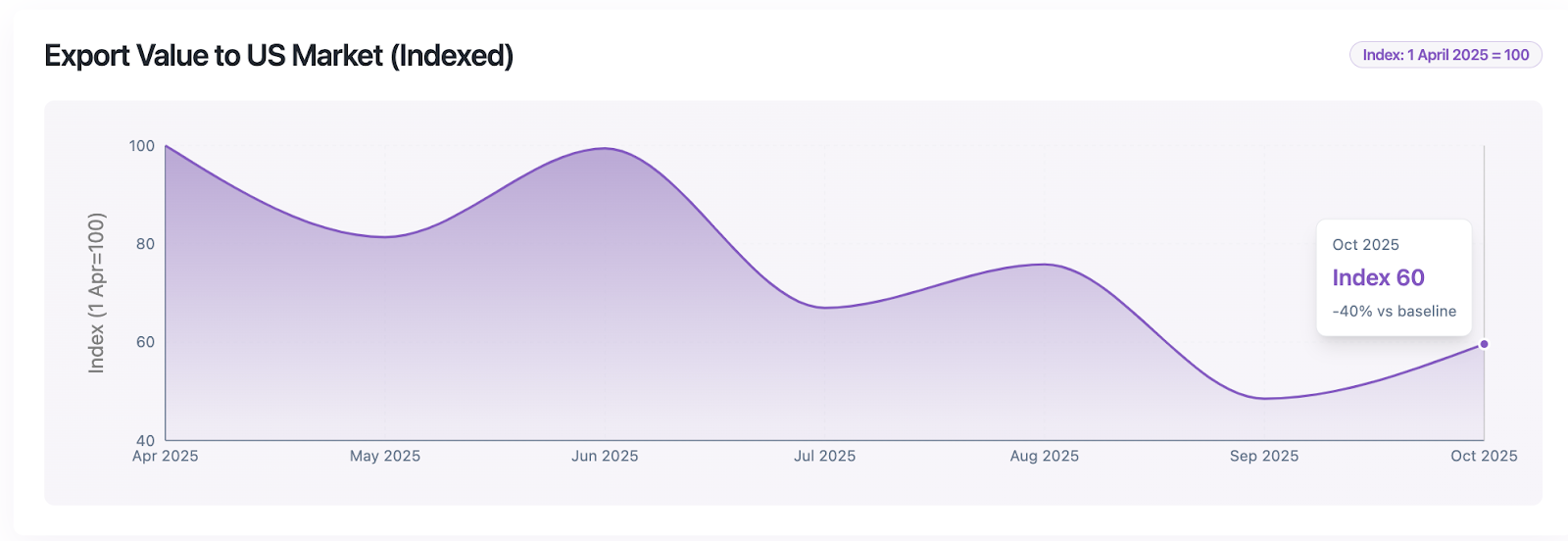
.jpg)
The first edition of TUNL Talks brought together small South African exporters to share how they’re navigating the new US tariff landscape. Here’s what we learned from their experiences, and what every small business selling abroad should know.
If you’re a South African small business exporting to the US, you’ve probably felt the impact of the new tariffs. Higher costs, lower demand and more complex shipping rules.
In our first TUNL Talks session (The Tariff Era), we sat down with a small group of business owners - from fashion and art to homeware and more - to unpack how the new US tariff rules are reshaping global trade.

The data is stark:
“My sales have significantly dropped. People just aren’t buying right now.” - Apparel small business shipping globally
This is no longer a short-term disruption. Even with a US Supreme Court challenge pending, the permanent removal of the de minimis threshold (the exemption that once allowed parcels under $800 in value to skip duties) means every shipment is now subject to import duties.
Small businesses can’t afford to “wait it out” - they need to adapt now. Making proactive changes to pricing, classification, and customer communication is essential to staying competitive.
“This isn’t going away. The faster we accept that and start making changes, the better we’ll be prepared.” — Craig Lowman, TUNL CEO and Co-Founder
One of the most actionable insights came from the discussion around HS code optimisation. This is all about reviewing your product’s customs classification to ensure you’re paying the lowest legal duty rate.
💡 These aren’t loopholes or misclassifications. They’re accurate, defensible adjustments that can legally reduce total duties.
Examples shared during TUNL Talks:
Try our new HS Code Optimiser Tool to help identify potential savings and classification efficiencies. This approach can benefit your business regardless of the current tariffs - any exporter can implement accurate classification practices to save on costs and improve compliance.
For many exporters, customer frustration has become one of the biggest obstacles. US buyers are often unaware that they, not the exporter, end up paying the costs of the increased duties and taxes. Some have even refused delivery when hit with surprise costs.
Inclusive pricing is a potential solution for business owners looking to reduce abandoned carts. Instead of showing a low base price and adding duties later, merchants can list an all-in price that more closely reflects the total landed cost.
Example:
A product previously listed at $104 is now shown as $150 including duties, instead of $104 + $46 at checkout.
🎯 The result: fewer abandoned carts and happier customers.
.png)

“It’s better to be clear upfront than to deal with angry customers later.” — Fashion small business shipping globally
Want to show inclusive pricing on your e-commerce site? Reach out to us support@tunl.to and we’ll help!
Another strong recommendation from the session: ship DDP (Delivered Duty Paid) instead of DAP (Delivered at Place) wherever possible.
💡 DDP means the merchant pays all duties upfront, so the customer receives the parcel without extra fees or customs delays. It signals professionalism and builds trust, as customers are aware of all costs up front and don't get any surprises in their buying journey.
💡 DAP, on the other hand, often leads to complaints and refusals when buyers are unexpectedly billed for duties on delivery.
“US customers aren’t used to import taxes. Building it into the price and paying it up front results in a better customer experience.” — Brett Flugel, TUNL Product Manager
We know that not every business can absorb these costs. Even if full DDP isn’t viable, showing duty estimates clearly at checkout can prevent surprises and boost conversion rates.
Transparency was one of the strongest themes to emerge from the event. Customers are more understanding when you explain the situation clearly, and that honesty strengthens your brand.
Simple ways to build transparency:
“Transparency is everything. I’d rather lose a sale than mislead a customer.” - Apparel and Fashion exporter
Even if your main export markets are outside the US, these changes affect how global buyers perceive pricing and reliability from South African brands. Being proactive now builds resilience later.
While the tariff landscape remains uncertain, small exporters are proving remarkably resilient.
In the meantime, visit the SME Export Index for live data and insights, or reach out to the TUNL team on support@tunl.to if you’d like help reviewing your pricing or HS codes.